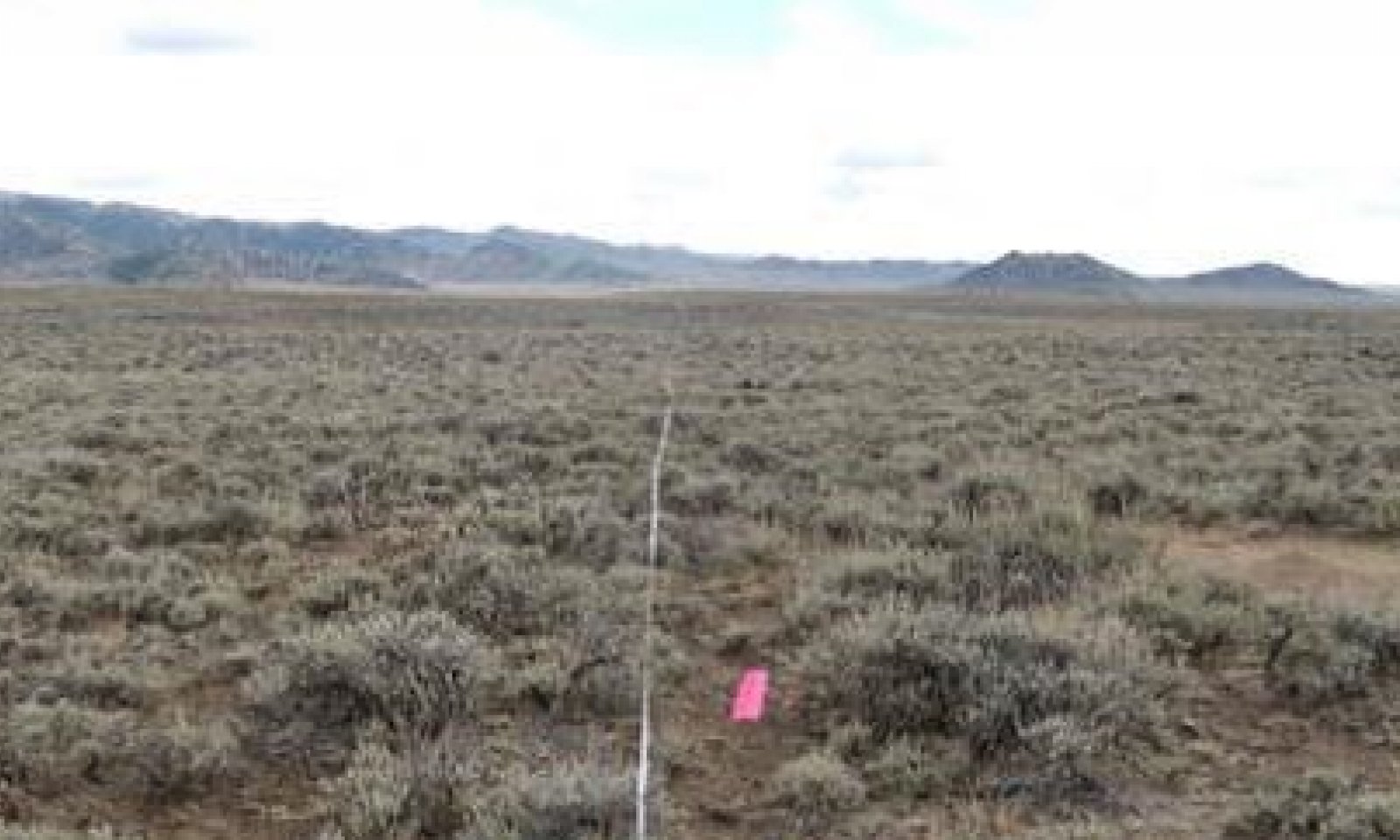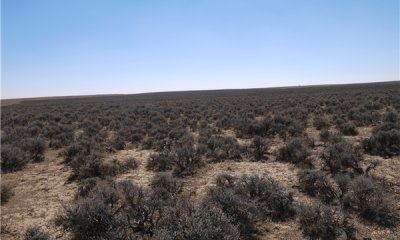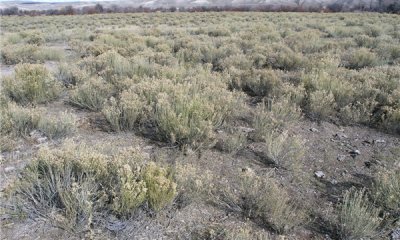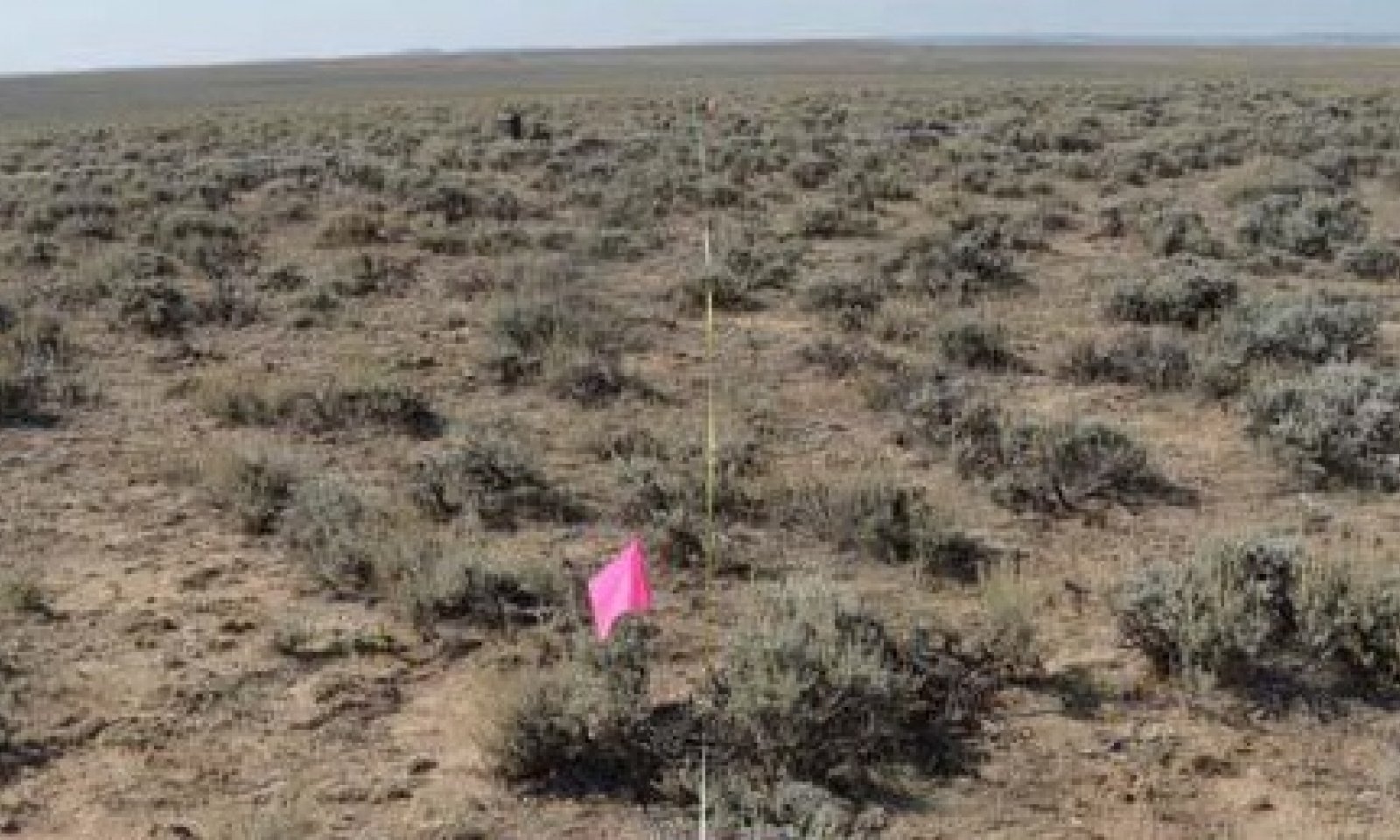
Loamy Green River Basin (Ly GRB)
Scenario model
Current ecosystem state
Select a state
Management practices/drivers
Select a transition or restoration pathway
- Transition T1A More details
- Transition T1B More details
- Transition T1C More details
- Transition T1D More details
- Restoration pathway R2A More details
- Transition T2A More details
- Transition T2B More details
- Transition T2C More details
- Restoration pathway R3A More details
- Restoration pathway R3B More details
- Transition T3A More details
- Transition T3B More details
- Transition T4A More details
- Restoration pathway R5A More details
- Restoration pathway R5B More details
- Restoration pathway R5C More details
- Restoration pathway R5D More details
-
No transition or restoration pathway between the selected states has been described
Target ecosystem state
Select a state
Description
The Reference Plant Community (big sage/bunchgrass) of this site is dominated by Wyoming big sagebrush (Artemisia tridentata var. wyomingensis) and cool-season perennial bunchgrass species, primarily bottlebrush squirreltail (Elymus elymoides ssp. elymoides), Indian Ricegrass (Achnatherum hymenoides), and Needleandthread (Hesperostipa comata),and rhizomatous grasses like thickspike wheatgrass (Elymus lanceolatus ssp. lanceolatus) as subdominant. Minor components include short-statured bunchgrasses such as Sandberg bluegrass, perennial forbs, and shrubs, including green rabbitbrush (Chrysothamnus viscidiflorus).
After a sagebrush killing disturbance (i.e. drought, insect, disease, herbivory, etc.), the Reference Plant Community transitions to the Bunchgrass Plant Community which is dominated by the mid-stature bunchgrasses mentioned above. Sagebrush is a minor component of this Plant Community, and only time without a sagebrush killing disturbance will advance this to the Bunchgrass/Big Sagebrush which is an intermediate Plant Community described because of the time this site spends with this species composition, its value to resource managers, and often it is the most prone to some sagebrush killing disturbances, such as fire, which are thought be fairly infrequent on this site (Bukowski & Baker, 2013).
The Bunchgrass/Big Sagebrush Plant Community, as a mid-seral stage, is often considered to have the most diversity and provide the most ecosystem services (i.e. wildlife habitat, livestock forage, etc.) in a multiple use management system.
Mid-stature bunchgrasses act as decreaser species in the Reference Community because they decrease in response to grazing pressure. Low stature bunchgrasses and rhizomatous grasses tolerate higher grazing pressure and grow on less fertile soils (NRCS, n.d.) than mid stature bunchgrasses. They often fill in the vegetation gaps created when mid stature bunchgrasses decline, hence they are collectively referred to as increaser species.
Wyoming big sagebrush is the dominant shrub on this site. Snow catchment is a significant hydrologic component of this site, and the hydrology changes when shrubs are removed from this site. There are often trace amounts of desert salt shrubs present on this site such as shadscale (Atriplex confertifolia), grey horsebrush (Tetradymia canescens), winterfat (Krascheninnikovia lanata), Gardner’s saltbush (Atriplex gardneri), and spiny hopsage (Grayia spinosa).
Submodel
Description
The Grazing Resistant State is characterized by the dominance of grazing tolerant species such as sagebrush, cool season rhizomatous grasses, short-statured, cool season bunchgrasses, and persistent, mat-forming perennial forbs.
The lack of mid-size, cool season bunchgrasses has a negative effect on overall litter amount, soil organic matter (SOM), and hydrologic function of the site is decreased from the reference state. Total annual production is reduced and species composition is altered, affecting biotic integrity.
The state is stable, with moderate resistance and low resilience to disturbance. Returning to the reference state with grazing management (or removal) alone is not possible in a reasonable timeframe.
Submodel
Description
This state is characterized by very old sagebrush stands with very little understory between the sagebrush canopy. Bare ground patch sizes are very large and comprise the majority of the interspaces between sagebrush plants.
Communities in the Eroded State (3) have crossed a threshold due to degradation of dynamic soil properties such as soil organic matter, fertility, and infiltration caused by soil erosion. Soil erosion affects the hydrology, soil chemistry, soil microorganisms, and soil physics to the point where intensive restoration is required to return the site to another state. Simply changing grazing management will not create sufficient change to restore the site within a reasonable time period. It will require a considerable input of energy to move the site back to the Reference State (1).
The Eroded State (3) is at high risk of weed invasion due to the high percentage of bare ground. Many invasive species are adapted to low soil fertility, high soil temperatures and low soil moisture content. This puts the community at risk of transitioning to the Disturbed State (4).
Submodel
Description
This state contains one plant community, the Rabbitbrush/Rhizomatous wheatgrass plant community. It is characterized by rabbitbrush dominance and a perpetual state of disturbance as evidenced in gated pasture corners, gravel pits, and areas repeatedly treated to kill sagebrush.
The disturbance cycle has been sped up to preclude non-sprouting shrubs such as Wyoming big sagebrush and favor sprouting shrubs such as green rabbitbrush (Chrysothamnus viscidiflorus). Significant changes are expected in soil structure, compaction, soil organic matter, infiltration, bulk density, and/or water holding capacity. Biological soil crusts have been removed, further exposing the soil surface to erosional forces as well as impairing carbon, nutrient, and water cycles. Soil and site stability has been impaired from the reference state.
Submodel
Description
All sites transition to this state following severe soil disturbance that removes the plant community. Extreme changes in soil and site stability have occurred, and primary emphasis for restoration should be to stabilize the site. Hydrologic function is often impaired through reduced litter and changes to soil surface such as compaction, and can be mitigated through proper soil handling and storage as well as erosion control measures on sites with >6% slope. Biotic integrity restoration can be achieved through proper seeding mixtures to restore site diversity and functional/structural vegetative components of the reference state.
Submodel
Mechanism
The driver for transition from the Reference State to the Grazing Resistant State (T1A) is continuous spring grazing and/or long-term severe drought.
Continuous spring grazing and/or extended drought can lead to a decline in palatable mid-stature bunchgrasses. Indian ricegrass, a short-lived perennial that requires more frequent seed production to provide an adequate seedbank, and bluebunch wheatgrass, a long-lived perennial that has elevated growth points, are typically the first species to decline (NRCS). Bottlebrush squirreltail will also decline with grazing pressure and lack of disturbances that kill sagebrush. Needleandthread is more grazing tolerant, but will eventually decline in plant density and vigor. As bunchgrasses diminish or die during periods of stress, low-stature bunchgrasses and rhizomatous grasses gain a competitive advantage, creating a shift in species composition towards less productive, shorter species. While bare ground may not change significantly, the pattern of bare ground will shift to larger gaps in the canopy and fewer herbaceous plants between shrubs. Many of the remaining desirable bunchgrasses will be only found in the understory of the sagebrush canopy.
Once mid-stature bunchgrasses species become scarce, it is unlikely that they have sufficient reproductive capability (seed source, tillering, or re-sprouting) to recover dominance in a reasonable time frame without extra energy being added to the system. When the understory vegetation has been degraded to this point, the transition to the Grazing Resistant State (2) can occur from either the Bunchgrass/Big Sagebrush Plant Community (1.2) or the Big Sagebrush/Bunchgrass Plant Community (1.1). The transition is not dependent on the increase of woody canopy cover, but rather on the lack of mid-stature bunchgrasses in the canopy interspaces.
Management should focus on grazing management strategies that will prevent further degradation. This can be achieved through a grazing management scheme that varies the season of use to provide periodic deferment during the critical growth period (roughly May-June). Forage quantity and/or quality in the Grazing Resistant State (2) may be substantially reduced compared to the Reference State, and will dramatically fluctuate in dry vs. wet years.
Mechanism
The driver for transition from the Reference State to the Eroded State (T1-3) is continuous high intensity/long duration grazing typically in the spring. Drought can accelerate this transition.
Indicators of this transition include significant decline in plant canopy cover or total annual aboveground biomass production below 200 pounds per acre. The primary indicator of this transition is the loss of understory, which creates open spots of with bare soil between the sagebrush canopy (>6 foot gap size). Soil erosion causes decreased soil fertility and infiltration, triggering the transition to the Eroded State. Several other key factors signal the approach of a threshhold: an increase in soil physical crusting, a decrease in soil surface aggregate stability, and/or evidence of erosion, including water flow patterns, development of pedestals, and litter movement.
Mechanism
The driver for transition from the Reference State to the Disturbed State (T1-4) is an increase in the disturbance cycle (i.e. grazing, drought, fire, mechanical, chemical or biological treatments), often in combination with grazing management that does not provide periodic deferment during the critical growth period.
The transition can occur if multiple soil disturbing activities occur over a relatively short time period. This could be high intensity/high frequency grazing, machinery, and/or multiple sagebrush treatments. Indicators include an increase in rabbitbrush to dominant levels in the plant community due to ground disturbance that could be either natural (i.e. water movement) or manmade (i.e. high density/high frequency stocking, mechanical treatments or heavy equipment operations). If introduced to the site, invasive species, such as cheatgrass, may be present. To prevent this transition, the site will require proper reclamation after disturbance using the most current science and technology available to restore native vegetation and prevent invasive dominance. In cases where topsoil loss occurs, it may be unavoidable to prevent this transition.
Long-term stress conditions for native species (e.g., improper grazing management, drought, and fire) will alter plant community composition and production over time and may hasten the transition. The resulting lower biomass production, reduced litter, and increased bare ground in this community can promote invasion of undesirable species.
Mechanism
The driver for transition from the Reference State to the Highly Disturbed State (T1-5) is a topsoil removing event with mechanical equipment. Examples include construction sites, oil and gas activity, and borrow areas.
Mechanism
The drivers for this restoration pathway are reduction of woody species and restoration of native herbaceous species by mechanical or chemical treatment of sagebrush, and grazing rest or deferment. If some mid- stature bunchgrasses remain under the sage canopy, light to moderate stocking with periodic critical growth period rest every 2 or 3 years can move the site back to the Reference State (1) combined with a mechanical or chemical sagebrush treatment. Most probable restoration pathway is from Big Sagebrush/Rhizomatous Wheatgrass Community (2.1) to the Bunchgrass Community (1.3). This could take multiple generations of management or could be accelerated with rest or deferment combined with successive wet springs conducive to seed germination and seedling establishment. (Derner, Schuman, Follett, & Vance, 2014). Seeding may be needed to acheive desired results, if seedbank has been depleted.
Relevant conservation practices
| Practice | External resources |
|---|---|
|
Brush Management |
|
|
Prescribed Grazing |
Mechanism
The driver for transition from the Grazing Resistant State to the Eroded State (T2-3) is continuous high intensity early season grazing from the Big Sagebrush/Rhizomatous Wheatgrass Community (2-1). Examples include calving pastures and small acreage horse pastures where rotational grazing is not employed, and stocking densities are high. Extended drought periods accelerate this transition. Indicators include very old sagebrush stands with very little understory between the sagebrush canopy. Bare ground patch sizes are very large (>6 foot gap size between all perennial plants comprising >30% of the transect) and comprise the majority of the interspaces between sagebrush plants.
Mechanism
The driver for transition from the Grazing Resistant State to the Disturbed State (T2-4) is an increase in the disturbance cycle (i.e. grazing, drought, fire, mechanical, chemical, biological treatments) combined with continuous high intensity grazing. Examples include calving pastures and small acreage horse pastures where rotational grazing is not employed combined with sagebrush treatment (mechanical, chemical, or biological). High stocking densities are soil disturbing, and adding sagebrush treatment(s) to this regime result in a an increase in the disturbance cycle.
Removal of shrubs without proper grazing management can lead to an increase in bare ground and erosion of the upper soil horizon, and the site can degrade to the Disturbed State (4). Consequences of this transition are decreased soil fertility, soil erosion, soil crusting, and decrease of soil surface aggregate stability.
Indicators of the Disturbed state are a shift in shrub dominance away from sagebrush and toward sprouting shrubs such as green rabbitbrush (Chrysothamnus viscidiflorus).
Mechanism
The driver for transition from the Grazing Resistant to the Highly Disturbed State (T2-5) is a topsoil removing event with mechanical equipment. Examples include construction sites, oil and gas activity, and borrow areas.
Mechanism
The Eroded State (3) has lost soil or vegetation attributes to the point that recovery to the Reference State (1) will require a combination of grazing management (changing season of use to allow frequent rest or deferment during the critical growth period) and chemical, biological or mechanical treatments, and reseeding. Seeding may be cost prohibitive as a restoration practice used alone. With reduced organic matter and loss of soil, soil amendments and/or mulch may be needed for restoration success. Restoration has occurred by mowing without re-seeding, but the grazing regime in this instance is low stocking density and winter only use.
Relevant conservation practices
| Practice | External resources |
|---|---|
|
Brush Management |
|
|
Range Planting |
|
|
Prescribed Grazing |
Mechanism
Restoration from the Eroded State (3) to the Grazing Resistant State (2) is possible with mechanical, biological and chemical treatments and temporary rest or deferment post-treatment. Due to loss of soil fertility, structure, and organic matter, reference community plants are slow to repopulate the site. Success of this restoration is highly dependent upon climatic factors, and may require successive wet years. This restoration pathway is often unintentionally achieved when the goal is the Reference State (1) because post-treatment management is not sustained in a manner that allows frequent critical growth period rest and/or use levels and recovery periods are not adequate to sustain mid-stature bunchgrasses.
Relevant conservation practices
| Practice | External resources |
|---|---|
|
Brush Management |
|
|
Prescribed Grazing |
Mechanism
The driver for transition to the Disturbed State (4)is a sagebrush killing event with continuous high intensity early season grazing. The event could be severe drought, flooding, insects, disease, or a sagebrush treatment such as mechanical (including heavy equipment/construction or a mowing/chaining/harrow type sage treatment), chemical (including 2,4-D or tebuthiron), or biological (including browse and/or insects). Fire is not usually possible due to lack of understory fuels to carry the fire. In fact, the Eroded State (3) is characterized by monotypic decadent sagebrush stands because they are fireproof.
Mechanism
The driver for transition to the Highly Disturbed State (5) is a topsoil removing event with mechanical equipment, but it can also occur after severe drought, extended periods of saturated soils, insects, or disease kills sagebrush, leaving the site with no perennial vegetation. Examples include construction sites, oil and gas activity, and borrow areas. Evidence of climate as a cause for this transition has been captured after the 2002 and 2012 drought (Clause & Randall, 2015).
Mechanism
The driver for transition to Highly Disturbed State (5) includes chemical and/or mechanical disturbance that removes existing vegetation.
Mechanism
The Highly Disturbed State (5) can be restored to the Reference State (1) if appropriate seedbed preparation and seed mixes are used, and weather conditions are conducive to seedling establishment. Weather is the largest determining factor in determining time and success, but the process can be accelerated with Best Management Practices for site restoration (http://www.uwyo.edu/wrrc/ ). There is low potential for recovery without significant inputs of energy and resources if topsoil has been removed. Seeding is needed to restore functional structural groups, and proper seedbed preparation is key to restoring ecological processes on the site.
Mechanism
The Highly Disturbed State (5) is often restored to the Grazing Resistant State (2) unintentionally when inappropriate seed mixes are used and post-seeding grazing does not provide adequate and periodic critical growth period rest. There is low potential for recovery without significant inputs of energy and resources if topsoil has been removed. Seed mixes that mimic an adjacent “reference area” rather than the site potential as described in the Reference State (1) will often result in a plant community resembling the Grazing Resistant State (2) due to pre- and post-seeding grazing management of the area.
Mechanism
The Highly Disturbed State (5) can transition the Eroded State (3) if disturbed areas result in total topsoil removal and are abandoned and climate is favorable for sagebrush seedling establishment. Wyoming big sagebrush will eventually colonize the site, but because soil conditions are severely altered, little to no under-story can be found. An example of this transition can be found on abandoned oil and gas wells that are 30+ years old where topsoil was not stockpiled and re-spread on the site after proper contouring and ripping, and either no seeding was done or the planting was a failure.
If topsoil was not physically removed, and there is a viable seedbank in the soil, recovery is possible without re-seeding as long as adequate rest from herbivory is provided to allow seedling establishment. Rest from herbivory is recommended during dry years to prevent further soil loss as well as in wet years to allow seedling establishment.
Mechanism
The Highly Disturbed State (5) can transition the Disturbed State (4) if disturbed areas result in only partial topsoil removal, leaving rootstock available for sprouting species such as rabbitbrush. This is common for gravel pits and areas disturbed as stockpile areas where soil is placed on the area for any amount of time, and then removed with equipment that scrapes some of the soil surface during the removal process.
Model keys
Briefcase
Add ecological sites and Major Land Resource Areas to your briefcase by clicking on the briefcase (![]() ) icon wherever it occurs. Drag and drop items to reorder. Cookies are used to store briefcase items between browsing sessions. Because of this, the number of items that can be added to your briefcase is limited, and briefcase items added on one device and browser cannot be accessed from another device or browser. Users who do not wish to place cookies on their devices should not use the briefcase tool. Briefcase cookies serve no other purpose than described here and are deleted whenever browsing history is cleared.
) icon wherever it occurs. Drag and drop items to reorder. Cookies are used to store briefcase items between browsing sessions. Because of this, the number of items that can be added to your briefcase is limited, and briefcase items added on one device and browser cannot be accessed from another device or browser. Users who do not wish to place cookies on their devices should not use the briefcase tool. Briefcase cookies serve no other purpose than described here and are deleted whenever browsing history is cleared.
Ecological sites
Major Land Resource Areas
The Ecosystem Dynamics Interpretive Tool is an information system framework developed by the USDA-ARS Jornada Experimental Range, USDA Natural Resources Conservation Service, and New Mexico State University.











